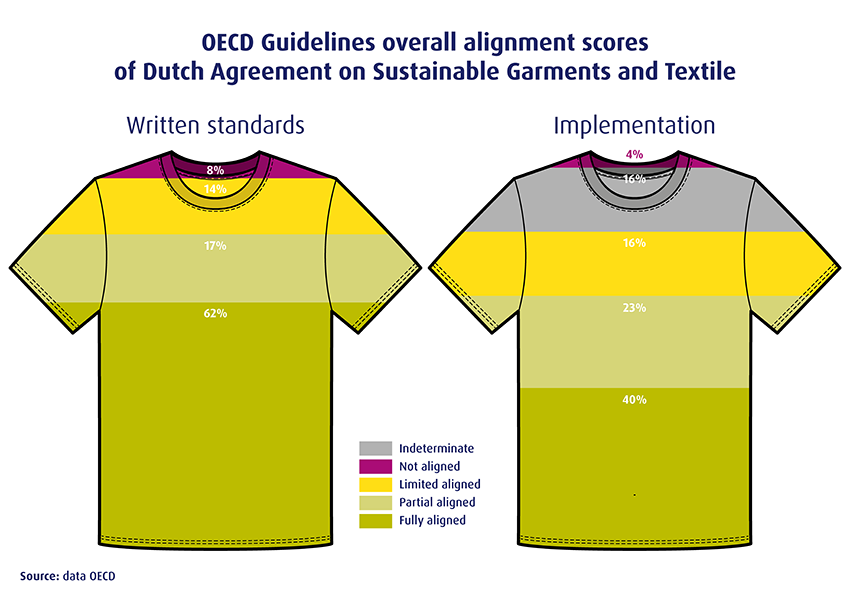Dutch Agreement on Sustainable Garments and Textile applies OECD guidelines well
The written standards regarding responsible business conduct of the Dutch Agreement on Sustainable Garments and Textile and their implementation are largely in line with the OECD Guidelines. This is apparent from an extensive analysis conducted by the OECD.
 © Shutterstock
© Shutterstock
The OECD has carried out an alignment assessment on the extent to which the working method of the Dutch Agreement on Sustainable Clothing and Textile (AGT) corresponds to its guidelines for the garment and footwear sector. This concerns the way in which the AGT assesses the due diligence policies and implementation of participating companies for responsible supply chains in the garment and footwear sector. The OECD is also looking at how parties within the AGT work together. Among the strengths, the OECD mentions the prevention of abuses, the prioritization of risks, the tailor-made solutions for small and medium-sized enterprises, the involvement of top management and the focus on purchasing practices. The latter is important, because it allows a company to directly change its own actions and thus achieve a positive influence in its chain. This aims at an equal relationship between a company and its supply chain partners. “The OECD congratulates the AGT on encouraging results from this assessment. We now look forward to seeing how the AGT, its steering group, members and stakeholders address these recommendations going forward, to go from strength to strength,” says Dorothy Lovell, Policy Analyst, OECD Centre for Responsible Business Conduct.
There is also room for improvement. For example, in the evaluation of companies there is too much attention for internal control measures, the prioritization of the correct risks can be sharper, gender must be better taken into account in the assessment process and the assessment of large companies could be organized more according to their scale and size. The way in which stakeholders in the textile chain have access to the complaints and disputes mechanism should also be improved. “We welcome this comprehensive report,” says Pierre Hupperts, Chairman of the AGT. “It shows the added value of the covenant and indicates that we use the right approach for many activities. It also gives us clear directions where we can comply better with the OECD guidelines, which also guide the Dutch government's IRBC policy. We see the report as an incentive to further fine-tune our processes and will start working on it.” Across all aspects, 62 percent of the AGT standards fully and 17 percent partially meet the guidelines. For the implementation, this is 40 percent and 23 percent respectively, see figure.

About the OECD Alignment Assessments
The OECD Alignment Assessments evaluate the extent to which industry or multi-stakeholder programmes are aligned with the recommendations of the corresponding OECD due diligence guidance (in this case the OECD due diligence guidance for responsible supply chains in the garment and footwear sector). In particular, they determine whether due diligence principles and requirements for companies are properly incorporated in written standards and to what extent implementation activities are aligned with OECD recommendations.
